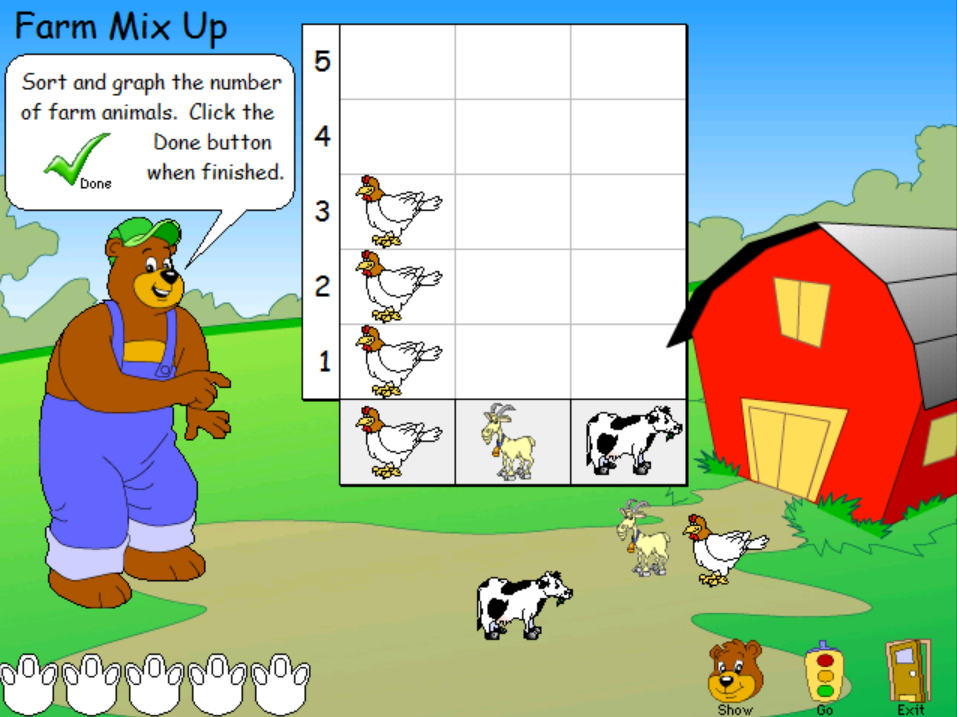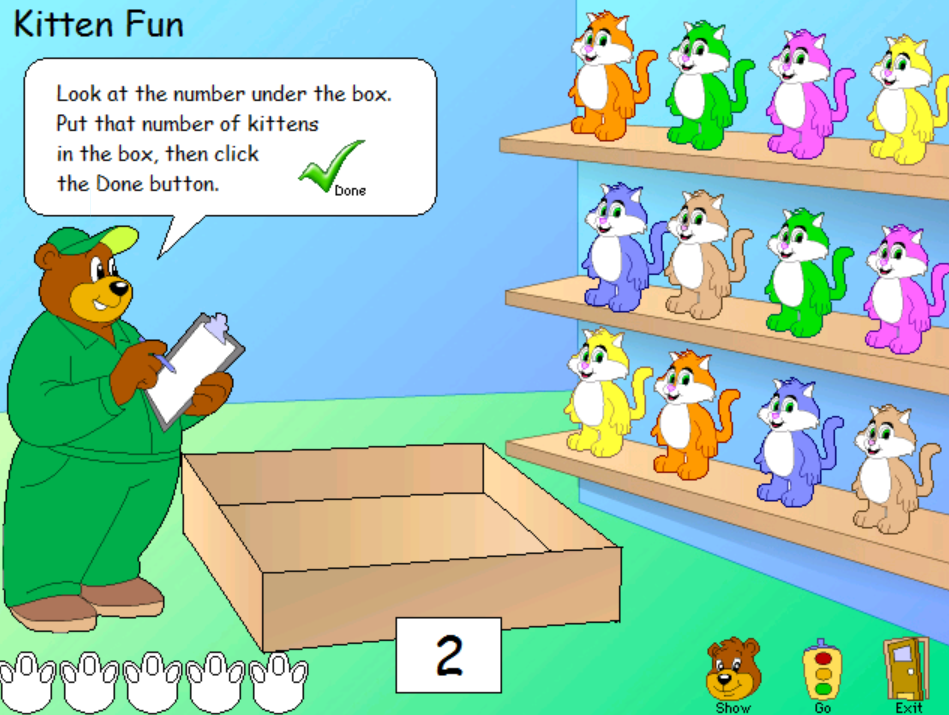Early Childhood
Language Arts emphasizes the writing process and focuses on the development of writing skills. Interactive activities and accommodates different reading levels, with audio instructions, graphics, animation, and music.
Math Concepts covers a wide range of primary math skills, and provide students with an engaging Toyland filled with activities correlated to the CCSS standards.
Math
Data Management and Probability K
- Construct a graph using a one-to-one correspondence
- Compare data in two categories
- Sort concrete objects by attribute
- Collect data first hand
Patterning & Algebra K
- Sort objects using a given attribute
- Describe and draw patterns using objects, letters, and numbers
- Recognize similarities and differences in attributes
- Create simple patterns
Geometry K
- Identify, sort, and classify three-dimensional objects
- Recognize single-attribute pattern
- Compare and sort two-dimensional object
- Explore and identify three-dimensional figures using concrete materials
Measurement K
- Demonstrate measuring concepts in everyday situations
- Compare two objects by identifying distinctive attributes
- Select an appropriate nonstandard unit to measure length
- Classify and describe linear attributes of objects
- Estimate, measure, and record linear dimensions
- Read analog clocks and write hour and half-hour time
- Represent monetary values to 10 cents using coins
- Estimate/count square units to measure surface area
- Estimate/measure the capacity of containers
- Relate temperature to daily activities
- Estimate/measure the mass of objects
Numeration K
- Represent the process of addition and subtraction through role-playing
Number Sense K
- Use a calculator to explore counting and problem solving
- Estimate quantities and mental math
- Discuss the use of numbers in everyday situations
- Count to 10
- Demonstrate one-to-one correspondence between numbers and objects
Language Arts
Vocabulary Builder K
- Students’ vocabulary development is enhanced through a repeated-exposure technique. Words are introduced in meaningful contexts using bimodal (aural-visual) word presentation.
Phonics Sequences A
- Students learn and practice the alphabet, initial and final sounds, and letter recognition.
Phonemic Awareness: Level A
- Students learn sounds associated with consonants, short and long vowels, consonant digraphs, phoneme word families, and difficult consonants.
Reading Links
- Vocabulary development, sight recognition vocabulary
- Correct tracking, left to right directionality
- Listening/speaking
- Sustaining silent reading over increasingly longer periods
- Reading in phrases to promote fluency
- Improving understanding of conversational dialogues as models
- of syntax in oral and written work
- Improving comprehension skills
- Using context clues through activities
- Identifying answers in texts, supporting answers with text
- Supporting answers with text
- Restating question parts in answer sentences
- Recollecting detail and story line
- Enjoying reading through stories
- Understanding various cultures, interests, and experiences
- Connecting reading and writing
- Recollecting details through writing
- Mastering everyday words for writing
- Practice writing, self-evaluation








